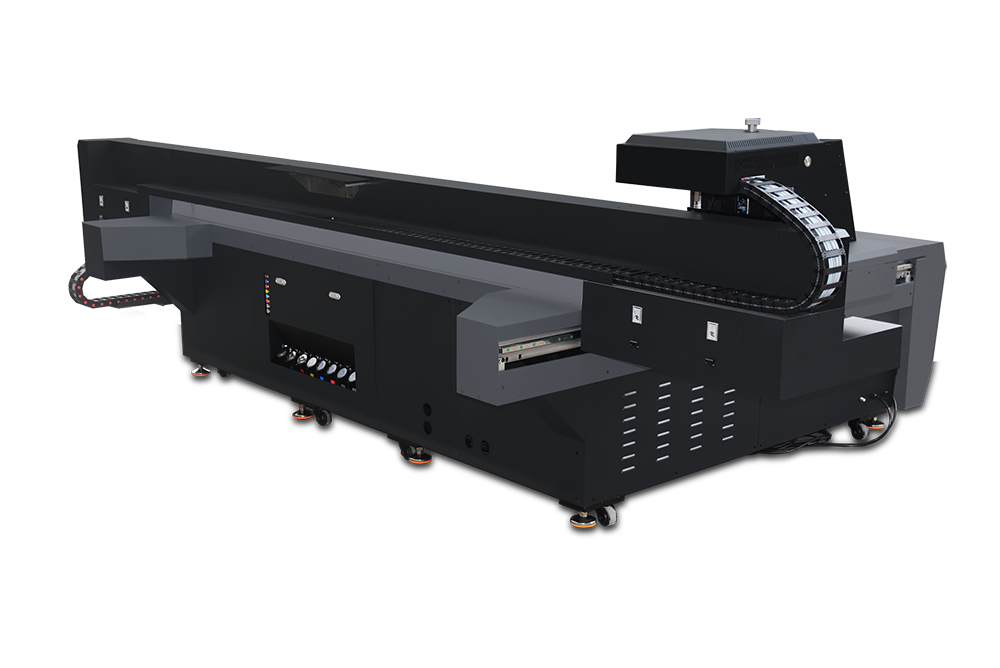How Does UV Flatbed Printing Affect the Environment?
How Does UV Flatbed Printing Affect the Environment?
In the realm of modern printing technology, UV flatbed printing has emerged as a popular choice for producing high-quality, durable prints on a variety of materials. This method, which utilizes ultraviolet (UV) light to cure inks instantly, offers numerous advantages in terms of speed, versatility, and print quality. However, as with any industrial process, it is crucial to assess its environmental impact. This article delves into the various ways UV flatbed printing affects the environment and explores potential strategies for mitigating these effects.

Understanding UV Flatbed Printing
UV flatbed printing is a digital printing technique that employs UV-curable inks. These inks are formulated to cure or dry immediately when exposed to UV light, allowing for rapid printing and finishing. The process can be used on a wide range of substrates, including plastics, glass, metal, wood, and even flexible materials, making it highly versatile. The instant curing of the inks also means that prints are resistant to fading, scratching, and chemical exposure, enhancing their durability.
Environmental Advantages of UV Flatbed Printing
Reduced VOC Emissions: Traditional solvent-based inks release volatile organic compounds (VOCs) into the air during the drying process. These compounds can contribute to air pollution and have adverse health effects. UV-curable inks, on the other hand, contain no solvents and therefore emit no VOCs, making UV flatbed printing a cleaner alternative.
Energy Efficiency: UV printing systems are designed to be energy-efficient. The instant curing process requires less energy than traditional drying methods, such as heat or air drying, leading to lower overall energy consumption.
Less Waste Generation: The ability to print directly onto various materials without the need for pre-treatment or priming reduces material waste. Additionally, the precise control over ink deposition minimizes ink waste during printing.
Environmental Challenges
While UV flatbed printing offers several environmental advantages, it is not without challenges.
Ink Composition: Although UV-curable inks are VOC-free, they may contain other chemicals that could be harmful if not properly managed. Some inks contain photoinitiators, which are compounds that react to UV light to initiate the curing process. These substances can be toxic and require careful handling and disposal.
Equipment and Energy Use: While UV printing systems are generally more energy-efficient than traditional methods, they still consume electricity, and the production of the UV lamps and other components has an environmental footprint. The disposal of old equipment also poses challenges, as electronic waste can contain hazardous materials.
UV Light Exposure: The use of UV light for curing inks raises concerns about potential exposure to UV radiation for operators. Prolonged exposure to UV light can lead to skin and eye damage, necessitating proper safety measures in the workplace.
Mitigating Environmental Impacts
To address the environmental challenges associated with UV flatbed printing, several strategies can be employed:
Ink Selection: Choosing inks with low environmental impact is crucial. Look for inks that are formulated with renewable or biodegradable components and have low toxicity. Some manufacturers are now offering eco-friendly UV inks that meet strict environmental standards.
Equipment Efficiency: Investing in the latest UV printing technology can help reduce energy consumption further. Modern machines are designed to be more efficient and use less power during operation. Additionally, regular maintenance ensures that equipment runs smoothly, reducing the need for frequent replacements.
Proper Waste Management: Implementing a comprehensive waste management plan is essential. This includes responsible disposal of ink containers, used UV lamps, and other consumables. Recycling programs for electronic waste can help minimize the impact of equipment disposal.
Workplace Safety: Ensuring the safety of operators is paramount. Providing adequate protective gear, such as UV-blocking glasses and clothing, and regular training on safe UV light handling can mitigate the risks of UV exposure.
Sustainable Substrate Choices: Consider the environmental impact of the materials being printed on. Opting for sustainable or recycled substrates can further reduce the overall environmental footprint of the printing process.
Conclusion
UV flatbed printing offers significant advantages in terms of print quality, speed, and versatility. Its environmental profile is generally more favorable than traditional printing methods, particularly in terms of reduced VOC emissions and energy efficiency. However, it is not without challenges, particularly in the management of ink chemistry, equipment waste, and UV light exposure. By adopting strategies such as choosing eco-friendly inks, investing in efficient equipment, implementing proper waste management, ensuring workplace safety, and selecting sustainable substrates, the environmental impact of UV flatbed printing can be further minimized. As technology continues to advance, it is likely that even more environmentally friendly solutions will emerge, making UV flatbed printing an even more sustainable choice for the future.
